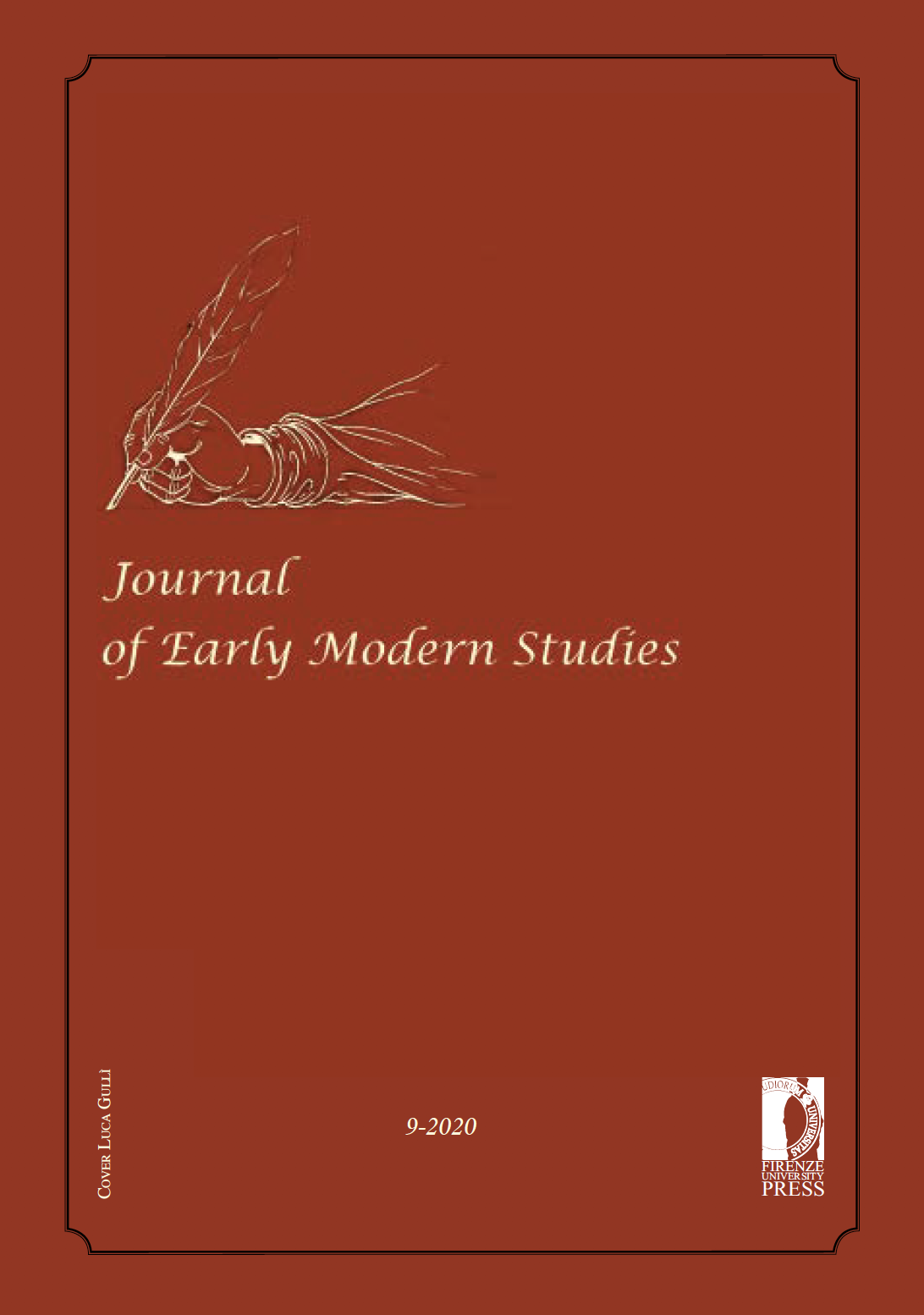‘Felice dolc aventuroso loco’: Courtly Life, the Courtier’s Model and the Myth of Urbino in the Graffiti of the Palazzo Ducale
Published 2020-03-07
Keywords
- Courtiers,
- Courtly Life,
- Graffiti,
- Palazzo Ducale of Urbino,
- Servants
How to Cite
Abstract
Baldassar Castiglione described the Palace of Urbino, Italy, as ‘the fayrest that was to be founde in all Italy’ ‘to the opinion of many men’. For Castiglione, such a Palace was the setting of his book The Courtier, published in 1528 but written from 1513-1514 onwards. The book became a kind of manifesto of the refined life of the courts of the Italian Renaissance, was translated into several languages and had numerous editions. While the Palace was associated (and in part still remains associated) with such an ideal and idealised world, this contribution tries to find clues of the courtly life that actually took place in the Palace, of the reception of the behavioural model of the good courtier as well as of the attitudes towards it and the city of Urbino as expressed on the surfaces of the Palace itself, i.e. by analysing writing and drawings engraved on its walls, door jambs, lintels, columns, etc.
The article thus studies graffiti not exclusively, nor mainly, in a history of writing perspective but also, and mainly, as a source of social and cultural history. Within this perspective, the circulation of contents among different supports, especially paper/walls deserves particular attention. By showing the wealth of information that
historians can find by analysing the walls, the essay argues that historical graffiti, still today often removed as human damage during refurbishments, should on the contrary be considered an important component of the cultural heritage, and – as such – preserved, studied and displayed to visitors.


